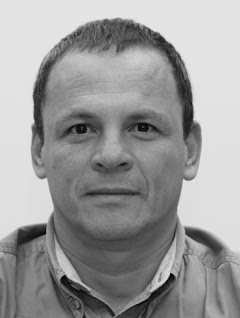Beat
I cover general and breaking news, sports, interviews, features and politics.
One Shot

“I like this photo because it sums up my thoughts about my job, which I see in terms of light and shadows. I found this shot at the end of the afternoon and it captured the news in an oil-painting-like image forever.”
Profile
I learnt to photograph by travelling around the country with a landscape photographer and climber named Andres Hurtado Garcia.
My first assignment as a photojournalist came in 1985. I had to cover the visit of Colombia’s president at the time, Belisario Betancur, to the inauguration of a museum, which was opened in the house of a Justice Minister who had been killed by the Medellin drug cartel. I was afraid that day; I did not know what photos to take or where to stand. I didn’t have a proper lens, and obviously I did not get the right photo. That was my first mistake.
The assignment that left the biggest mark on me was covering the riots in Bolivia when thousands of Bolivian peasants and miners marched to La Paz in June 2005 to demand the resignation of President Carlos Mesa. I was there for one month and I was amazed by the images – for example the miners launching dynamite cartridges at the riot police.
I enjoy covering riots and sports events the most because I can find images there that feel absolutely real. When you're there, adrenaline starts rushing and makes you feel more human, and you feel alive when you know you have a good picture.
I learnt during the Sydney Olympic Games to concentrate all the time while on assignment. Never lose your concentration at an event.
I respect photographer Ansel Adams because he changed the concept of photographic technique, and I respect Robert Capa for his coverage of war and his struggle in solitude.
Behind the Scenes


